
The first image people have in mind when they hear for the first time about the desert is one with dunes.
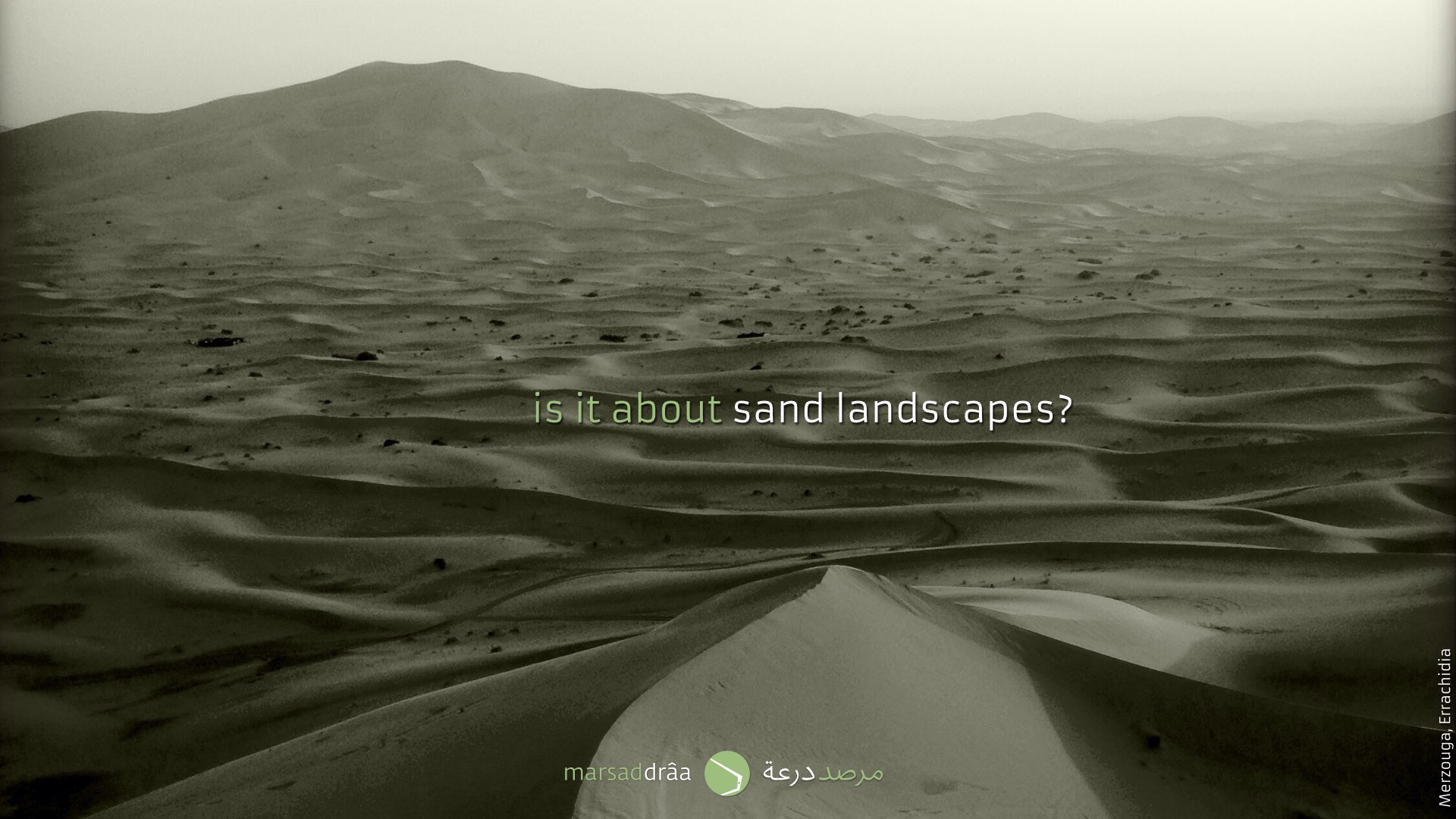
But the desert is only about sand landscapes?

Is it just about architecture?
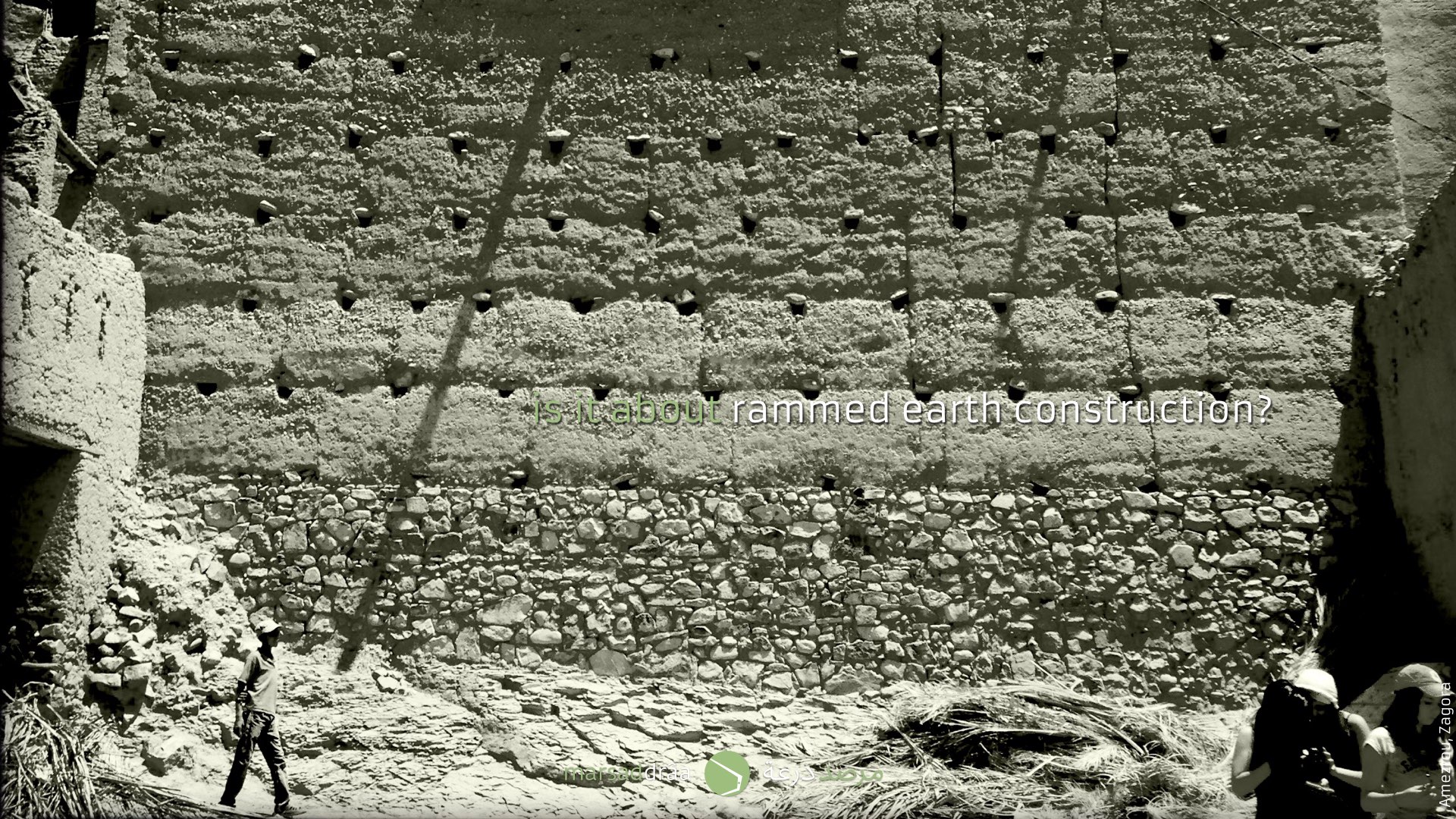
Specially rammed earth construction?

Or is it about architectural heritage?
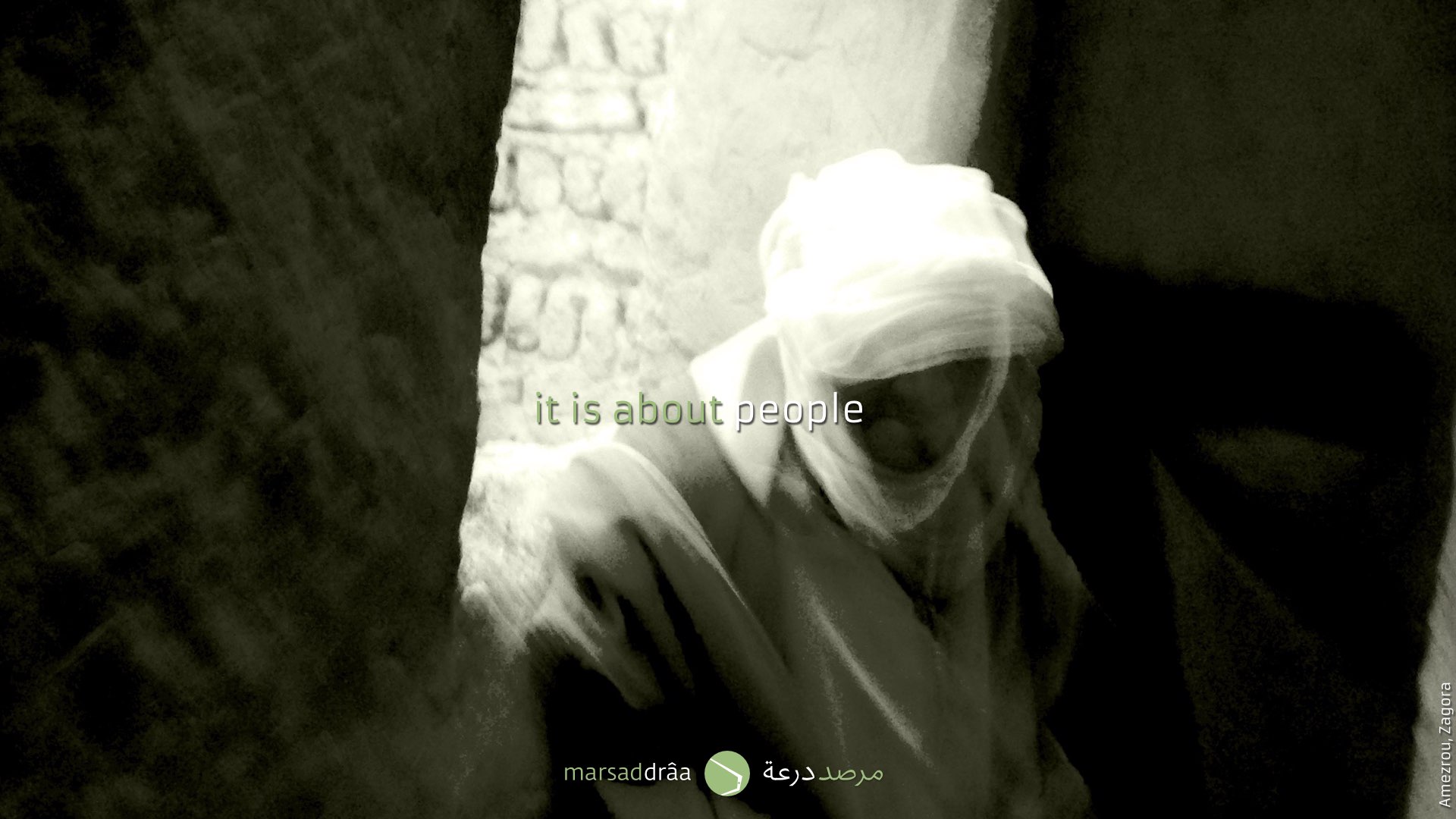
The desert is, overall, about people. It is true the first impression is given by the landscapes but then you realise that how desert people treat you is not usual because of their way of life and thinking.

People that have adapted themselves to the extremes conditions of these regions. This adaptability explain how they are, how they live, how they are dressed (not related to religion but the need to be protected from sun, sand, wind...)...


People that have their own philosophy, as a response to the desert conditions.

With a very rich culture based on music...

Dance...

And thanks to the diversity provides by the different tribes (Berber, Arabic, Draoua, Toureg, Saharoui...).

But if we have to mention the most important element around which every revolve, this is WATER.
Creating amazing landscapes...


Landscapes that must be understood as changing scenes, depending of there is water or not...

Water can be conducted in an artificial way, but you cannot hide it or treated in secondary role, because you need it in the oasis...

Besides, it is the watercourse that is creating the "public space" in the oases. You must think first to this infrastructure and then you will have the paths and the plots.

Water is not every time there. Some times it appears after several years of absent, changing the ecosystem and the life of people.

The water can be dangerous too, and can broke down this bridge during the last floods of December.

When water disappear it let us new landscapes.

If there is a river with water, you will have a palm grove.

The oasis are based on agriculture, and they are composed of three elements, the Palm trees, the Fruit trees and the cereals, and you need the three of them. If you don't cultivate the land (because you think it is not worthy, because people prefer to work on tourism, because you have not water...), the sand will arrive, the land will become poorer, the Fruit trees are going to fall down and later it will be the turn of Palm trees. At the end the Palm Grove will disappear.

May people earn their life with the oasis agriculture? It is true the cereals and Fruit trees do not provide enough money (even if now there are several programmes to test aromatics and medicinal plants). But they can get money from the Palm trees. In the Zagora region they can get 15 kgr of dates per Palm (it means almost 800£ per tree). If they arrive to improve the production as in Tunisia where they get 60 kgr per tree, it is really worthy to cultivate the palm grove.

Where do people live in these valleys? Sometimes on the edge of the palm grove...

Others, inside the palm grove.

The oasis are not islands in the middle of no where. You can find valleys in Zagora (the Drâa valley) with a palm grove of 200 km length.

Near Zagora you can have an idea of the positions of the ksour (fortified cities). There are 290 ksour, just in the Drâa valley.

Until 1933 tribes were fighter again themselves and population had to live in a secure place, the ksour, fortified cities that could loge 6.000 people.
Some of them are now abandoned, but others are still in use. The one on the lefts is a interesting case, not only because it is still occupied but because of the extensions people have made until now. It is a natural evolution and it can give us the key to propose a contemporary urban planning on the oases.

Most of ksour have one or two main streets, the small and covered streets, perpendicular a to the main, in order to give acces to the houses.

The main "streets" can be also used as a community dinning room...

As a play area for children or as a work space for women.

The secondary streets show spaces that are closed to art rather than architecture, but it really works because it protect people from sun and wind.

The limits between public and private spaces are also limits between lights and shadows.
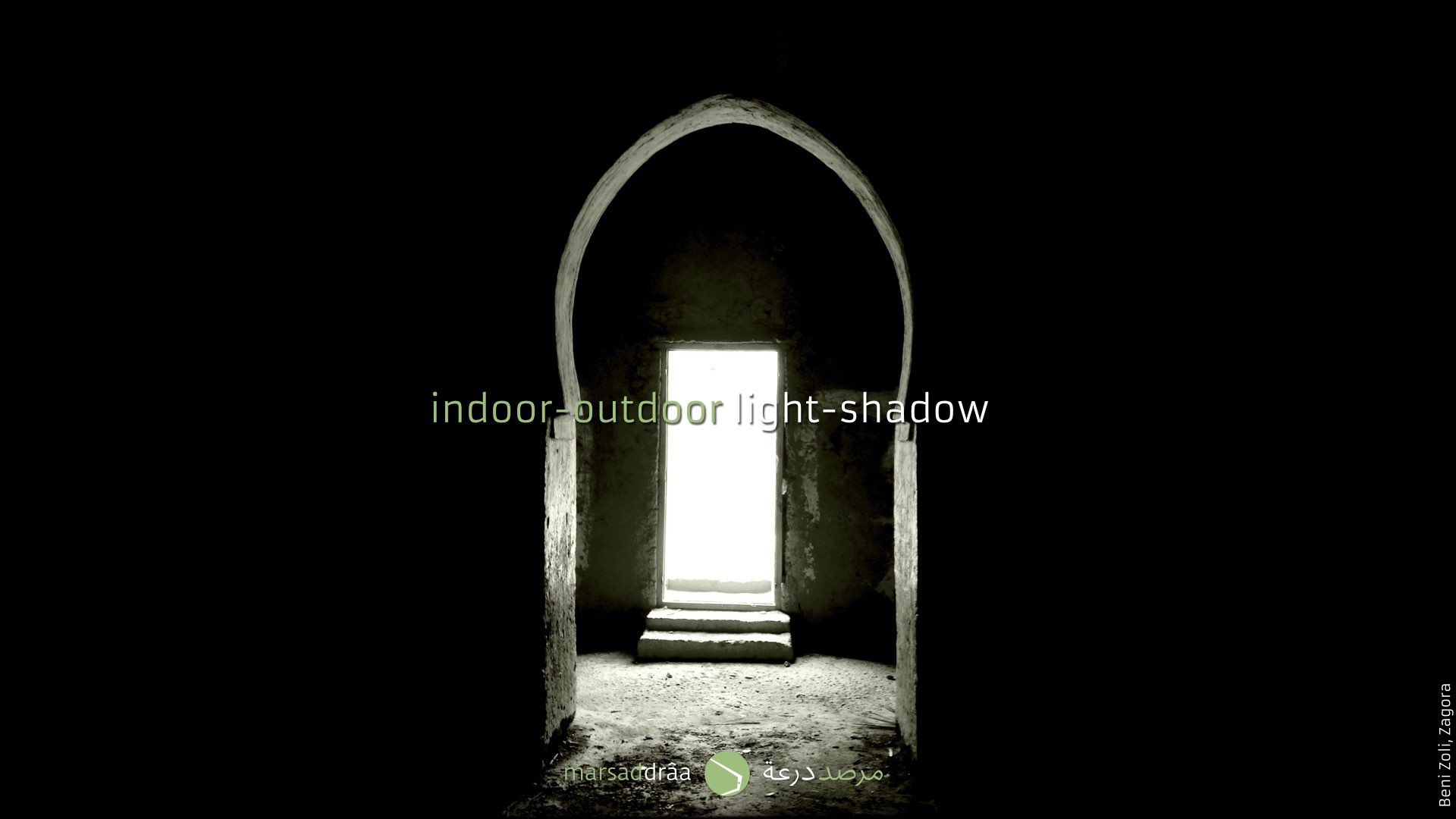


The evolution of the ksar in Amezrou, let us studying how people lived in the past and how they live now, getting lots of data about what it works, and therefore what could be considered for the new dwellings in the desert regions.

Of course every house has a courtyard and they are built on earth.

Every ksar has at least one mosque, but sometimes also a synagogue, like in Amezrou.

Most of the ksour are made on earth, using mud bricks or...

Rammed earth, using the earth of the same plot.

Sometimes the choice of these two elements must be done in terms of water consumption. Marsad Drâa has helped people fromTissardmine village to build a community center and water has been decisive to use just rammed earth, because they need less water than bricks. It means that the construction system (and the project) has been conditioned by water.

The horizontal structures are mode of palm wood (cut into four sections), reed and earth. It means that everything they need to build they get it from the same plot and from the palm grove. But, one of the problems these constructions are, it is the width of the rooms because they only reach 2,5-3m with the palm wood. When people have money, they buy others wood beam in order to have rooms with 4-5m width.

The important thing of the desert architecture is the way of thinking, how to get the maximum just with things you find around you. If you also have to adapted the houses or the ksar to the topography, they will.



If you don't have earth to build but stones, you will use them. In this case, we are talking about granaries. There are three types, isolated in a town, excavated in a cliff or over a hill. The last type is the biggest and it is a fortification where people could stay for a long time and a place where food was stocked and secured. It is like a ksar, but with the spaces concentrated. The secondary "streets" are not in a horizontal axe but in a vertical one.

In Amtoudi there is a second granary with 9 levels. We could say it is a small skyscraper...

As they only have stones, everything must be with it...

Including the furniture...

What happens when people must settle in a geography of stones and mobile dunes?

Villages must be adapted to a life with sand, that's way they protect their plots with a rammed earth wall.

A 3 meters high wall can resist just one year. To avoid the sand to come inside, the owner must use a tractor to put the sand out once per year.

If there is just a house, it becomes a fortification with no windows, just the entrance door.

There is another way of life in the desert.

The nomads. They can stay just three weeks in each place and they can move a thousand kilometers to spend the summer in cooler regions.

They can be just a family with its animals, the most precious "treasure".

Because animals are important in everyday life, for transport...

Sheep, goats are important because they provide milk, meat and wool.

As camels do.

The desert tents use a fabric made of goat and camel wool. This fabric is transpirant, which is good for the ventilation of the tent, but when there is rain, the fibers increase their volume, they get closer and the fabric become waterproof.

Tents are also an engineering piece. They can resist strong winds (100-150km/h).


It is thought that earth architecture is cubic b ut we can find other shapes.



We can even find buildings similar to well known architecture master pieces, for example the Borges & Imao Bank by Alvaro Siza.

And we can learn a lot about passive solar systems...

Where there is no place for decoration or superficial architecture.

Passive solar systems for public spaces too. Spaces that sometime seems a Richard Serra sculpture.

The habitants of this neighborhood of Beni Zoli (Zagora), had to leave the ksar after the floods. They built it applying what they have learnt and lived, improving the scale of the private and public spaces. A 3 meters width is enough for a street in order to be protected from the sun. Of course the orientation of the street was perpendicular to the wind direction.

Other systems will protect the facades from the sun.


One example of the implication of people in every aspect of the way of life in the desert are these motifs on traditional carpets. They are not just a design made by a craftsman...

We can find those motifs on the buildings facade. But it is not an architect who design it...

These motifs are Berber tattoos used by women to protect themselves from some beliefs.

Some elements of the architecture of the desert, can be used and reinterpreted by contemporary artists.

Younès Rahmoun (www.younesrahmoun.com) made this sculpture called Nahla (palm tree in Arabic).

The desert can be also a place for innovation. Problems we find there are not usuals in Europe (not yet)...

Desertification is a big issue in these regions. Sometimes the abandon of agriculture (due to the lack of water, the emigration...), can accelerate the problem. The fact is that the palm grooves are disappearing.

This is not a land art installation but measures and attempts to stop the advance of dunes. They don't work very well.

The dunes affect also cities, like M'hamid El Ghizlane where houses are buried by sand.

Also the ksour are affected.

If traditional systems, used by agronomy engineers, don't work, we have to search another solution, using methods from another domains.

A group of students from the architecture school of Tetouan and Rabat, have developed un project in Amezrou (Zagora) where the dunes are going to cut the palm grove and bury the village.

They propose to build a barrier with an architectonical scale. This barrier will be made of rammed earth and the shape it is the one that fix with the negative shape of the dune. The disposition of the houses is based on the ksour, with main streets and others smaller perpendicular to the axes.
It is a contemporary version of traditional ksour.
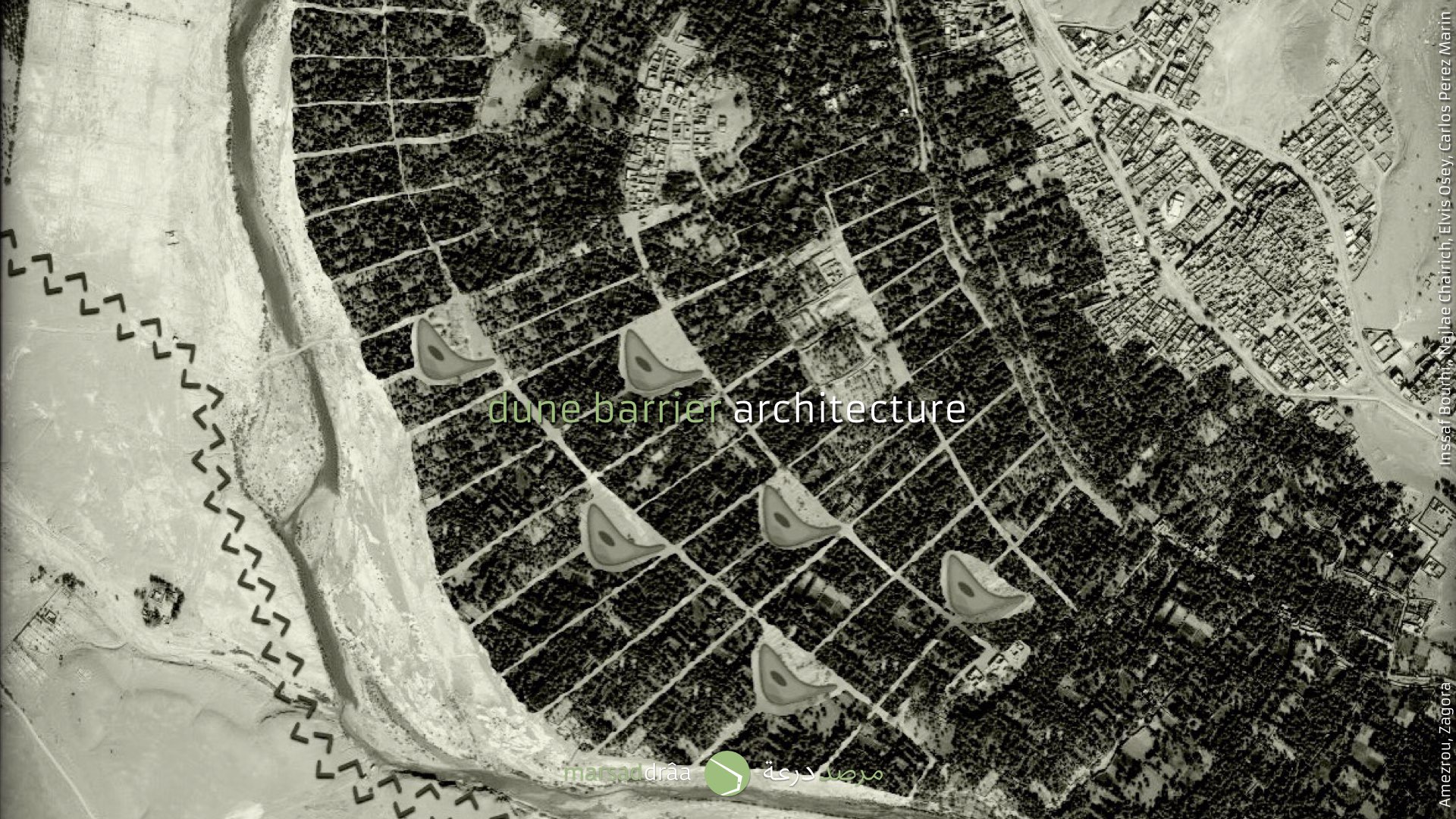
Besides, the new barriers will let recover the palm grove, for that purpose, the oasien agriculture has been considered as another element of this "urban (oasien) planing".
At the end, the proposition of living inside the palm grove is not new (as we saw at the beginning), but it is something the new architects have forgotten.

To test the efficacy of the proposition we have built a curved wall made on rammed earth, adapted to the shape of a small dune in Tissardmine.


We must wait to see what will happen. Maybe, the dune is going to pass through the barrier as it does when it find a strait wall or a house. Or maybe the dune will pass on both sides of the barrier. It is also possible that the dune will stay fixed. It will be interesting if the dune pass on both sides of the wall because it will let us know, that in some cases, it will be better to built houses with an aerodynamic shape to do no interfere in the dune's path.

Anyway, this proposition is a variation of what nature already does...

We have tried to show that the desert is a place to learn many things about architecture, agriculture, engineering, sociology, music... And also that problems must be studied by multidisciplinary teams...

That is what we do in Marsad Drâa, to develop researches with people interesting in learning and proposing solutions, but always in a multidisciplinarity way.